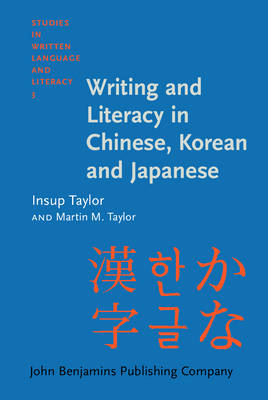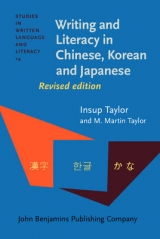
Writing and Literacy in Chinese, Korean and Japanese
John Benjamins Publishing Co (Verlag)
978-90-272-1794-3 (ISBN)
- Titel erscheint in neuer Auflage
- Artikel merken
Chinese, Japanese, South (and North) Koreans in East Asia have a long, intertwined and distinguished cultural history and have achieved, or are in the process of achieving, spectacular economic success. Together, these three peoples make up one quarter of the world population.
They use a variety of unique and fascinating writing systems: logographic Chinese characters of ancient origin, as well as phonetic systems of syllabaries and alphabets. The book describes, often in comparison with English, how the Chinese, Korean and Japanese writing systems originated and developed; how each relates to its spoken language; how it is learned or taught; how it can be computerized; and how it relates to the past and present literacy, education, and culture of its users.
Intimately familiar with the three East Asian cultures, Insup Taylor with the assistance of Martin Taylor, has written an accessible and highly readable book. Writing and Literacy in Chinese, Korean and Japanese is intended for academic readers (students in East Asian Studies, linguistics, education, psychology) as well as for the general public (parents, business, government). Readers of the book will learn about the interrelated cultural histories of China, Korea and Japan, but mainly about the various writing systems, some exotic, some familar, some simple, some complex, but all fascinating.
1. Preface, pxii; 2. 1. Introduction, p1; 3. Part I: Chinese; 4. 2. Spoken Chinese, p28; 5. 3. Chinese Characters: Hanzi, p43; 6. 4. Meaning Representation in Characters, p62; 7. 5. Sound Representation by Characters, p79; 8. 6. Logographic Characters vs Phonetic Scripts, p87; 9. 7. Text Writing in Chinese, Korean, and Japenese, p102; 10. 8. Reforming Spoken and Written Chinese, p112; 11. 9. Learning Hanzi, Pinyin, and Putonghua, p131; 12. 10. History of Education and Literacy in China, p144; 13. Summary and Conclusions, p174; 14. Part II: Korean; 15. 11. Korean Language, p188; 16. 12. Hancha: Chinese Characters, p203; 17. 13. Han'gǔl: Alphabetic Syllabary, p211; 18. 14. Learning Han'gǔl and Hancha, p231; 19. 15. Why Should Hancha de Kept?, p243; 20. 16. History of Education and Literacy in Korea, p255; 21. Summary and Conclusions, p272; 22. Part III: Japanese; 23. 17. Japanese Language, p282; 24. 18. Kanji: Chinese Characters, p295; 25. 19. Kana: Japanese Syllabary, p306; 26. 20. Romaji: Roman Letters, p315; 27. 21. Why Keep Kanji?, p323; 28. 22. Learning Kanji and Kana, p342; 29. 23. The Japanese Educational System, p354; 30. 24. History of Mass Literacy in Japan, p364; 31. Summary and Conclusions, p374; 32. Postface, p380; 33. Glossary, p381; 34. Subject Index, p393; 35. Author Index, p409
| Erscheint lt. Verlag | 7.12.1995 |
|---|---|
| Reihe/Serie | Studies in Written Language and Literacy ; 3 |
| Verlagsort | Amsterdam |
| Sprache | englisch |
| Maße | 164 x 245 mm |
| Gewicht | 935 g |
| Themenwelt | Geschichte ► Hilfswissenschaften ► Paläografie |
| Geisteswissenschaften ► Sprach- / Literaturwissenschaft ► Sprachwissenschaft | |
| Sozialwissenschaften | |
| ISBN-10 | 90-272-1794-7 / 9027217947 |
| ISBN-13 | 978-90-272-1794-3 / 9789027217943 |
| Zustand | Neuware |
| Haben Sie eine Frage zum Produkt? |
aus dem Bereich



